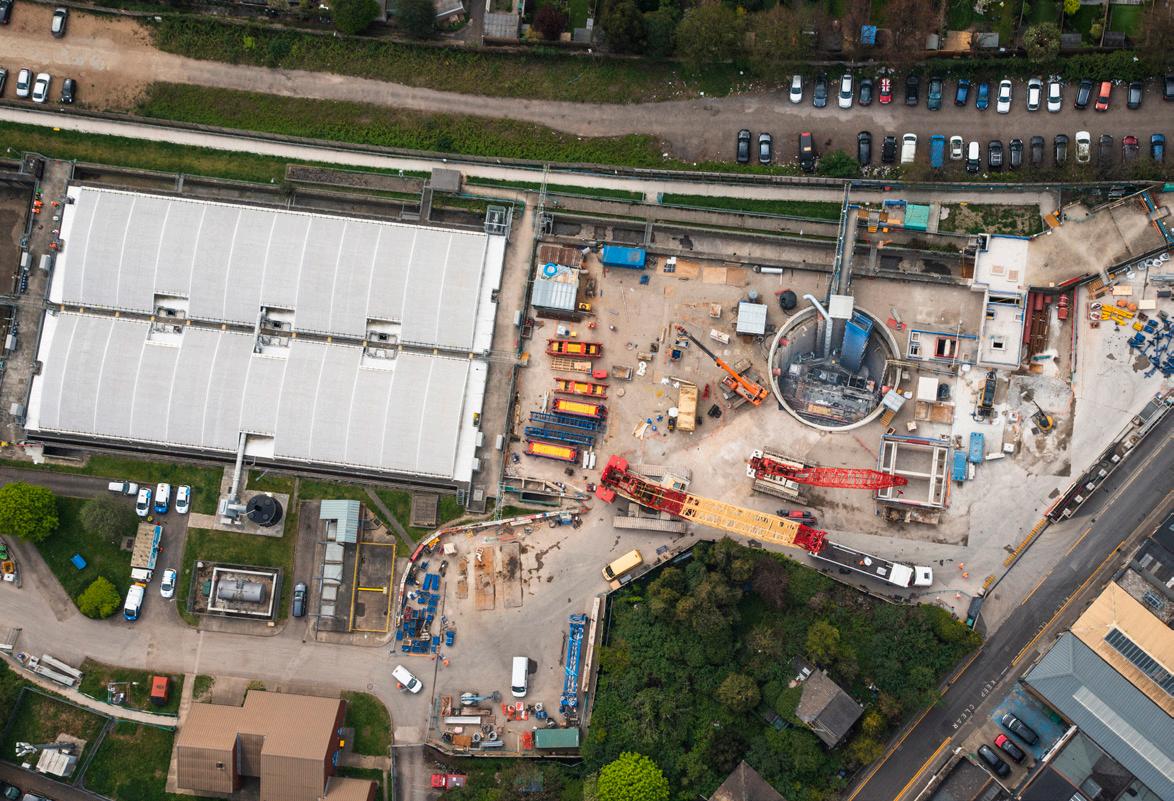
1 minute read
About us

London relies on a 150-year-old sewer system built for a population less than half its current size.

As a result, tens of millions of tonnes of raw sewage overflow the system each year and end up in the River Thames.
That’s where we come in...
We’re building a 25km ‘super sewer’ under the Thames to intercept those nasty spills and clean up our river.
The project has provided thousands of new jobs, and is also creating new public spaces along the riverside for Londoners to enjoy.
Shaft rOOF BEAMS ‘CAP OFF’ MORE milestones
The huge shafts which range in depth from 3565 metres, excavated across London as part of the Super Sewer project are being completed after years of construction deep underground.

At our Acton Storm Tanks site, the team has completed the installation of the precast roof beams, while work progresses on benching and other internal structures within the shaft. The cover slab which will eventually cover the shaft is also under construction. Benching is the shaped concrete at the bottom of the shaft which will safely steer sewage into the tunnel and avoid the build up of debris once the new sewer is operational.

Similarly, at our Carnwath Road site, work is progressing well on the shaft internal structures and benching.
Once completed, several of the Tideway sites slabs will be used to form the new areas of public space along the river.
Check in on the new ‘bug hotel’ at Barn Elms site
As works get closer to completion, new walls at our Barn Elms site have been designed to make ‘bug hotels’ for insects, helping to promote biodiversity.
The gabion wall façade system creates a biodiverse wall, encouraging invertebrates and some small mammals to live there.

Bug hotels benefit lots of different types of minibeasts and insects such as ladybirds, bees, spiders and woodlice.
Minibeasts can then use our bug hotels as a safe space to shelter, lay their eggs, raise their young, and seek refuge from predators.




